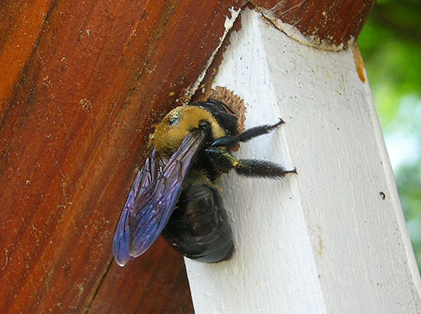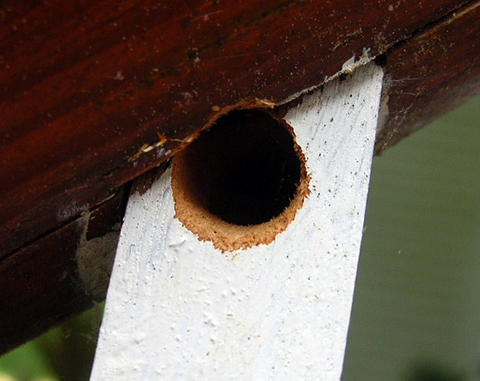Carpenter Bee Activity
go.ncsu.edu/readext?595458
en Español / em Português
El inglés es el idioma de control de esta página. En la medida en que haya algún conflicto entre la traducción al inglés y la traducción, el inglés prevalece.
Al hacer clic en el enlace de traducción se activa un servicio de traducción gratuito para convertir la página al español. Al igual que con cualquier traducción por Internet, la conversión no es sensible al contexto y puede que no traduzca el texto en su significado original. NC State Extension no garantiza la exactitud del texto traducido. Por favor, tenga en cuenta que algunas aplicaciones y/o servicios pueden no funcionar como se espera cuando se traducen.
Português
Inglês é o idioma de controle desta página. Na medida que haja algum conflito entre o texto original em Inglês e a tradução, o Inglês prevalece.
Ao clicar no link de tradução, um serviço gratuito de tradução será ativado para converter a página para o Português. Como em qualquer tradução pela internet, a conversão não é sensivel ao contexto e pode não ocorrer a tradução para o significado orginal. O serviço de Extensão da Carolina do Norte (NC State Extension) não garante a exatidão do texto traduzido. Por favor, observe que algumas funções ou serviços podem não funcionar como esperado após a tradução.
English
English is the controlling language of this page. To the extent there is any conflict between the English text and the translation, English controls.
Clicking on the translation link activates a free translation service to convert the page to Spanish. As with any Internet translation, the conversion is not context-sensitive and may not translate the text to its original meaning. NC State Extension does not guarantee the accuracy of the translated text. Please note that some applications and/or services may not function as expected when translated.
Collapse ▲Carpenter bee activity is on the increase. The activity near the end of March and early April was mostly males which have the white spot on the front of their head. They are also the ones that often terrorize people sitting on a wood bench or on their deck which are likely home to overwintering females in previous years’ galleries. After mating, the female begins the task of drilling out a new tunnel (see at right) which will house her offspring in individual cells within the gallery.
There are still no “silver bullets” for preventing carpenter bees from drilling other than using non-wood composite building materials. Favored targets for the bees are area such as fascia boards, trim. Porch rails and spindles (balusters). Some people use carpenter bee traps which will catch some bees but whether they control the bees is in the eye of the user.
Surface sprays typically have limited surface residual to be truly effective (or durable). We still recommend applying an insecticidal dust to the holes and then caulking them about 24 hours later. Remember that when you’re spraying/dusting a carpenter bee gallery, keep a safe distance between your face and any possible backsplash. Be equally careful if spraying up over your head (the laws of gravity apply to pesticides, too!) Consult the NC Ag. Chemicals Manual page (170) for chemicals that can be used for this job.




